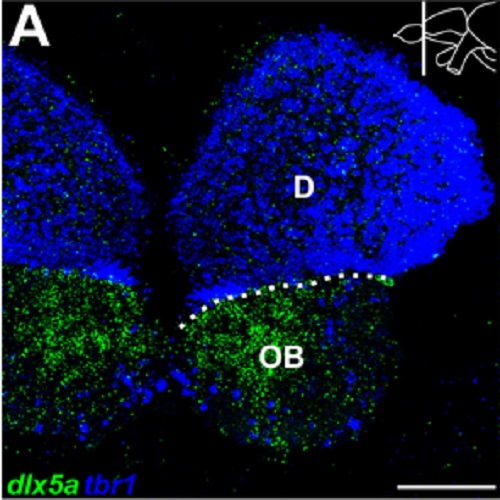Subdivisions of the adult zebrafish subpallium by molecular marker analysis.
The morphology of the telencephalon displays great diversity among different vertebrate lineages. Particularly the everted telencephalon of ray-finned fishes shows a noticeably different morphology from the evaginated telencephalon of nonray-finned fishes and other vertebrates. This makes the comparison between the different parts of the telencephalon of ray-finned fishes and other vertebrates difficult. Based on neuroanatomical, neurochemical, and connectional data no consensus on the subdivisions of the adult telencephalon of ray-finned fishes and their relation to nuclei in the telencephalon of other vertebrates has been reached yet. For tetrapods, comparative expression pattern analysis of homologous developmental genes has been a successful approach to clarify homologies between different parts of the telencephalon. In the larval zebrafish, subdivisions of the subpallium have been proposed using conserved developmental gene expression. In this study, we investigate the subdivisions of the adult zebrafish telencephalon by analyzing the expression pattern of conserved molecular marker genes. We identify the boundary between the pallium and subpallium based on the complementary expression of dlx2a, dlx5a in the subpallium and tbr1, neurod in the pallium. Furthermore, combinatorial expression of Isl, nkx2.1b, lhx1b, tbr1, eomesa, emx1, emx2, and emx3 identifies striatal-like, pallidal-like, and septal-like subdivisions within the subpallium. In contrast to previous models, we propose that the striatum and pallidum are stretched along the rostrocaudal axis of the telencephalon. Further, the septal nuclei derive from both the pallium and subpallium. On this basis, we present a new model for the subdivisions of the subpallium in teleost fish.

- J. Comp. Neurol. 2012 Feb 15;520(3):633-55
- 2012
- Neurobiology
- 21858823
- PubMed
Enabled by:
